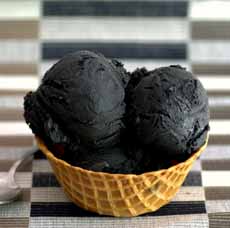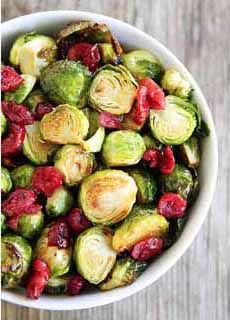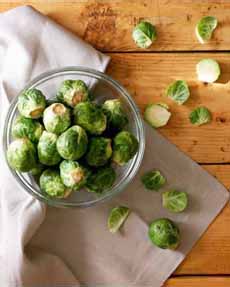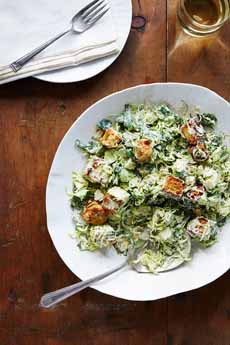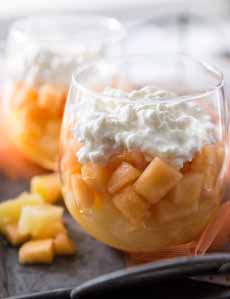|
To viewers of Looney Toons cartoons, “Sufferin’ succotash!” was a phrase uttered often by Sylvester the Cat, when annoyed or surprised.
Why Sylvester suffering at the thought of eating succotash? Perhaps he didn’t like lima beans? We hereby ask Warner Brothers to weigh in.
Lima beans are a love-‘em-or-hate ‘em food. We have a solution for the haters—and for those who love the squishy beans: Replace the limas with al dente chickpeas.
Chickpeas (garbanzo beans) are not just for hummus. Substitute them for the lima beans and enjoy seasonal succotash.
The recipe is below, but first:
THE HISTORY OF SUCCOTASH
The word succotash comes from the Narragansett sohquttahhash, meaning broken corn kernels. The corn was mixed with lima beans or other shell beans, and was a staple food.
Succotash was introduced to the Pilgrims by the Native Americans. The word in the Narraganset language* is msíckquatash. The Narragansett, an Algonquian Native American tribe from present-day Rhode Island, also gave us the words quahog, moose, papoose, powwow and squash.
Ingredients From Mesoamerica
Lima beans originated in the Andes and Mesoamerica; the larger variety in the Andes around 2000 B.C.E., and the smaller variety in Mesoamerica around 800 C.E. By around 1300, cultivation had spread north of the Rio Grande, and in the 1500s, explores and conquistadors brought the beans back to Europe, where Old World cultivation began.
Corn was first cultivated in the area of Mexico around 5000 B.C.E., bred from wild grasses. The plant then spread throughout North and South America.
Combining a grain with a legume creates a dish that contains all essential amino acids, and both ingredients could be dried and stored. Thus succotash was important nutrition for Native Americans, for the Pilgrims and for other European emigrés to the New World. Succotash became a traditional dish for Thanksgiving celebrations in New England and elsewhere [source].
In some parts of the South, any mixture of vegetables prepared with lima beans and topped with lard or butter is called succotash. The two basic ingredients can be enhanced with bell peppers and tomatoes—both New World foods—and carrots (from the Old World).
Because of the relatively inexpensive ingredients, succotash was also a staple during the Great Depression: sometimes cooked in a casserole form, sometimes as a pot pie.
While most people think of succotash as corn kernels and lima beans, the original recipe used any shelled beans.
RECIPE: SUCCOTASH
This recipe is more complex and flavorful than garden-variety succotash which consists of only corn and limas.
Ingredients
1/4 cup olive oil
3 tablespoons unsalted butter
2 cloves garlic, finely chopped
1 medium onion, cut into 1/4-inch dice
2 medium red bell peppers, seeded, deveined, and cut into 1/4-inch dice
2 medium zucchini, seeded and cut into 1/4-inch dice
2 10-ounce packages of frozen lima beans or beans of choice, rinsed under warm running water and drained
3 cups fresh or frozen corn kernels (4 ears)
Salt and freshly ground pepper to taste
1 tablespoon coarsely chopped fresh sage
1 tablespoon picked fresh thyme leaves
Preparation
1. COMBINE the oil and butter over medium-high heat in a large skillet; heat. Add the garlic and onion; cook until translucent, about 4 minutes. Add the bell peppers, zucchini, lima beans, and corn.
2. SEASON with salt and pepper. Cook, stirring occasionally, until vegetables are tender, about 10 minutes. Stir in the herbs and serve.
|
|

[1] Chipotle and roasted garlic salmon atop grilled corn and lima bean succotash. Here’s the recipe (photo © McCormick).

[2] Have you ever seen fresh lima beans? Here they are, in the pod and shelled (photo © Burpee)./span>
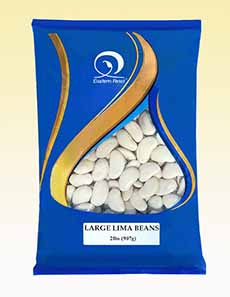
[3] Lima beans are available in cans (mushy!) and frozen, but you can also buy and reconstitute dried lime beans for better flavor (photo © Eastern Feast | Amazon).
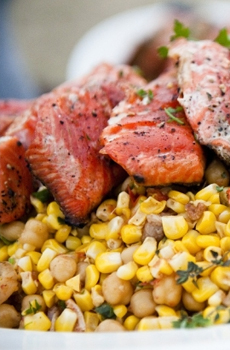
[4] You can substitute chickpeas or any other bean for lima beans (photo © Laura McConnell | Skillet Street Foods).
|
